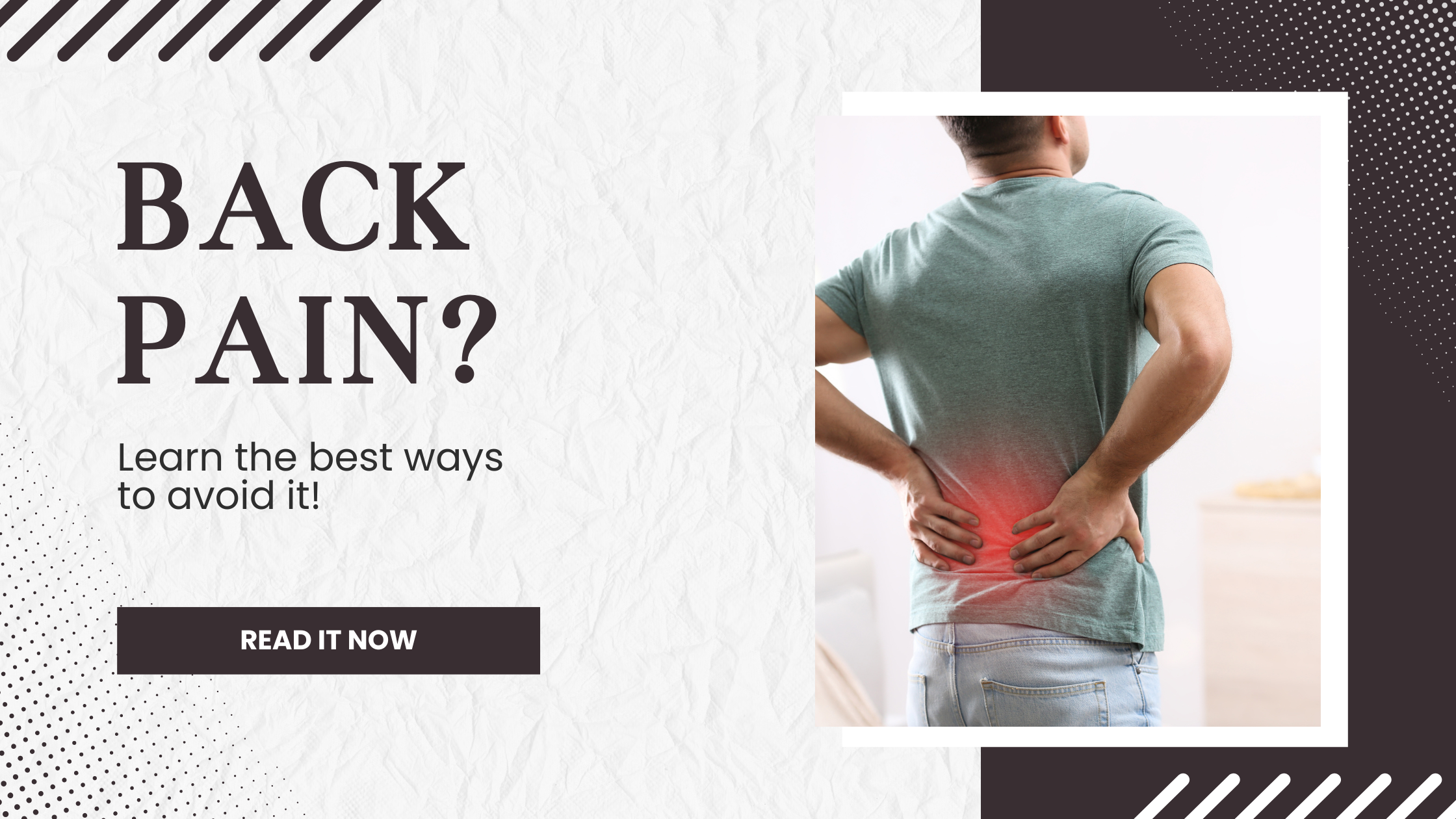Back pain is a prevalent issue that affects millions of people worldwide, impacting daily activities and overall quality of life. Whether it stems from poor posture, sedentary lifestyles, or underlying medical conditions, back pain can be debilitating if left unaddressed. Fortunately, there are proactive measures individuals can take to prevent and avoid back pain.
In this article, we’ll explore a range of practical tips and strategies designed to help you avoid back pain and maintain a healthy spine. From ergonomic adjustments to exercise routines, we’ll delve into actionable advice that can make a significant difference in your well-being. Whether you’re prone to occasional discomfort or seeking preventive measures, implementing these tips can contribute to a more comfortable and pain-free lifestyle. Let’s embark on a journey to discover effective ways to protect your back and promote optimal spinal health.
Watch your Weight
Maintaining a healthy weight is crucial for preventing and managing back pain. Excess weight, particularly around the midsection, can exacerbate discomfort by altering your body’s center of gravity and placing additional strain on your lower back. This strain often results from the spine having to support the added weight, leading to increased pressure on the vertebrae, discs, and surrounding muscles.
Furthermore, carrying excess weight can contribute to the development or worsening of conditions such as degenerative disc disease, spinal stenosis, and osteoarthritis. These conditions can further exacerbate back pain and limit mobility if left untreated.
To mitigate these risks, it’s essential to maintain a healthy weight through a balanced diet and regular exercise. By staying within a reasonable range of your ideal weight, typically recommended to be within 10 pounds, you can alleviate pressure on your spine and reduce the likelihood of experiencing back pain.
Sleep Well to Avoid Back Pain
Sleeping on your side with your knees slightly bent towards your chest is often recommended for back pain relief. Alternatively, if you prefer sleeping on your back, placing a pillow under your knees and another under your lower back can provide support. However, sleeping on your stomach can strain your back; if it’s unavoidable, consider placing a pillow under your hips for added support.
Finding the right mattress is essential, as preferences vary. A mattress that is too soft or too hard can contribute to backaches. Many experts suggest a medium-firm mattress for individuals with chronic back pain. Experimentation may be necessary to determine the most suitable option for you. To firm up a soft mattress, placing a piece of plywood between the box spring and mattress can provide additional support. Conversely, if your mattress is too hard, a thick mattress pad can help soften it for improved comfort.
Sleeping well is going to make a difference on your stress and anxiety levels as well, it is incredible what a great night of sleep can do!
Join the My Back Pain Coach
The Back Pain Coach program stands out by targeting the underlying cause of discomfort, offering a genuine solution to alleviate the issues associated with back pain. Consisting of a series of eight exercises, this program requires just sixteen minutes of your time, providing a simple yet effective way to achieve relief from back pain that may have seemed unattainable.
Moreover, it facilitates the enhancement of blood flow, oxygenation, and nutrient delivery to the spine in less than 20 minutes. These exercises are straightforward and can be performed virtually anywhere, without the need for costly or specialized equipment.

Check your Posture
Begin by assessing your posture: stand with your heels against a wall, ensuring that your calves, buttocks, shoulders, and the back of your head touch the wall, with enough space to slip your hand behind the small of your back. Should your posture shift when you step away, make corrections promptly.
When seated, prioritize a chair with either a straight back or low-back support. Maintain your knees slightly higher than your hips, and set the chair back at an angle to provide comfortable support for the small of your back. Consider using a wedge-shaped cushion or lumbar pad if necessary, and prop your feet on a stool if needed. For prolonged standing, keep your head up and your stomach engaged.
Evaluate your desk setup to avoid straining your neck and eyes. Position your computer monitor directly in front of you, approximately an arm’s length away, with the top of the monitor situated 2 to 3 inches above eye level. If you wear bifocals, consider lowering the monitor slightly for improved comfort.
Ensure that your keyboard is at the correct height to prevent circulation restriction and joint and nerve stress in your arms, shoulders, and wrists. Placing the keyboard directly on the desk, just below chest level, for extended periods can lead to numbness and pain. Adjust the keyboard height accordingly to promote ergonomic typing posture and reduce the risk of discomfort and injury.
Watch out on how you Lift
Instead of bending over from the waist, which can strain your back, bend your knees and squat down. Engage your stomach muscles and keep the object close to your body as you stand up, allowing your legs to do the lifting. Avoid twisting your body while lifting, as this can put additional stress on your back. Whenever possible, opt to push rather than pull heavy objects, as pushing is gentler on the back muscles.
Conclusion
In conclusion, maintaining a healthy spine and avoid back pain requires a multifaceted approach that encompasses various aspects of daily life. From mindful posture practices to ergonomic adjustments in our workspaces, and from regular exercise routines to proper lifting techniques, every decision we make can impact the health of our backs. By implementing the tips and strategies discussed in this article, we can empower ourselves to take proactive steps towards alleviating and preventing back pain. Remember, small changes in our habits and environments can yield significant improvements in our spinal health and overall well-being. Let us commit to prioritizing our backs, ensuring they receive the care and attention they deserve for a life of comfort and vitality.






